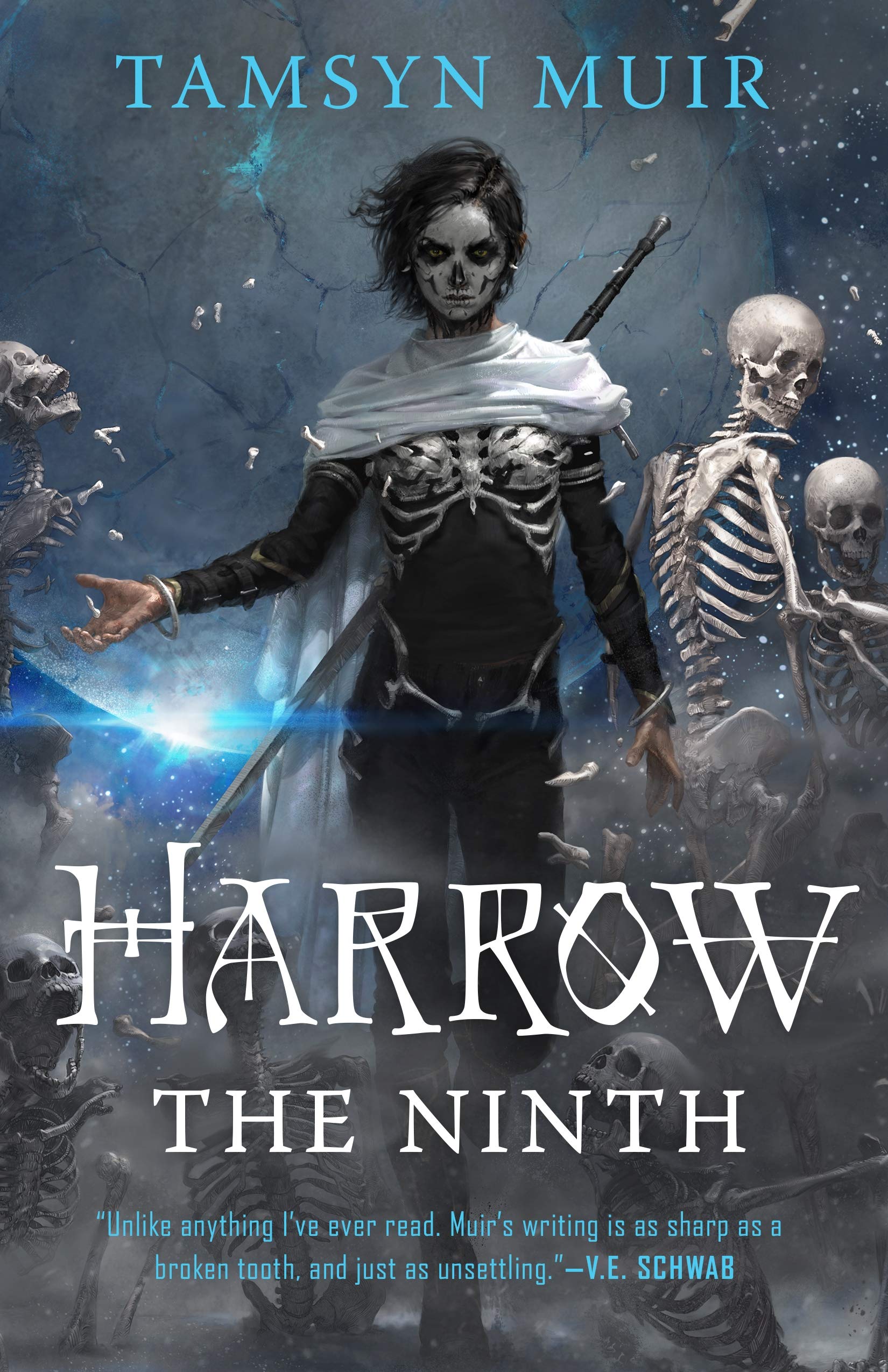 (Spoiler Warning: I am going to discuss some minor spoilers from Gideon the Ninth.)
(Spoiler Warning: I am going to discuss some minor spoilers from Gideon the Ninth.)
After reading Maggie’s post about Gideon the Ninth by Tamsyn Muir, I finally picked it up off of my virtual “to-read” stack and listened to the audiobook. I loved it. Muir’s writing is a strange but wonderful mix of gothic horror and a mild form of internet humor which somehow never gets in the way of the horror writing, while the narration by Moira Quirk is so spot on that her inflection of the jokes made me laugh out loud many times, a credit to both Muir’s writing and Quirk’s reading. So, naturally, I decided to move right along into the second book of what is now going to be a four-book series, Harrow the Ninth. I listened to the audio for Harrow too, narrated again by Quirk, and found this sequel to be nothing like I expected, which is saying something considering how wild and crazy Gideon was. Harrow is one of those books where you need to read the book before it to understand what is happening. But, Harrow’s narrative and structure is so intricately balanced that it’s worth reading a whole other book to get to. Let me explain.
At the end of Gideon, Harrowhark (Harrow) the Ninth, heir to the Ninth House and it’s last and greatest necromancer, ascended to immortality and defeated a threat that sought to bring down the planet-spanning necromantic empire the nine houses support. Harrow is now a lyctor, an immortal Cavalier serving the Emperor of the Nine Houses, the Necrolord Prime, the King Undying, John. (Yes, just John.) However, something is not right with Harrow. In fact, many things are not going well. Harrow quickly learns that the whole “becoming a lyctor” thing didn’t quite work for “unknown” reasons. “Unknown” because she intentionally altered mind and memories to protect herself from something. All she has to explain why she did this is a stack of 24 envelopes with letters she wrote to herself, in code, with weird, maddeningly vague instructions on them for when to open each envelope, instructions like “To be opened if your eyes change.” And now she has to pick up the pieces of whatever she’s done.
On top of all this, Muir employs a complex method for writing Harrow. Each chapter alternates between second person and third person narration. The second person chapters are for Harrow’s present, often dangerous, situation. The third person chapters, in contrast, replay Harrow’s memories of what happened in the last book, memories which are strikingly different to how events were described in Gideon. Going back and forth between these two styles can make reading Harrow feel like a sort of detached, out-of-body experience, and I struggled to come to grips with it at first. But it is worth pushing through, as all that confusion and mystery leads into a twist around the three-quarter mark that I found equal parts astounding, hilarious, and horrifying. And it explains why Muir wrote this story the way she did. It’s not just a style choice. The last quarter of the book is a mad rush of revelations and action, all of which is left in a series of tantalizing cliff hangers for the next book to pick up on.
Harrow the Ninth is a bewildering, layered, thoroughly enjoyable second act to Gideon the Ninth. If you’re looking for something different from the typical sci-fi/fantasy series, this is the series to read.
You can place Harrow the Ninth on hold through Heights Libraries, or listen to the audiobook through Libby/Overdrive.
Content warning: Blood, Violence, Death


